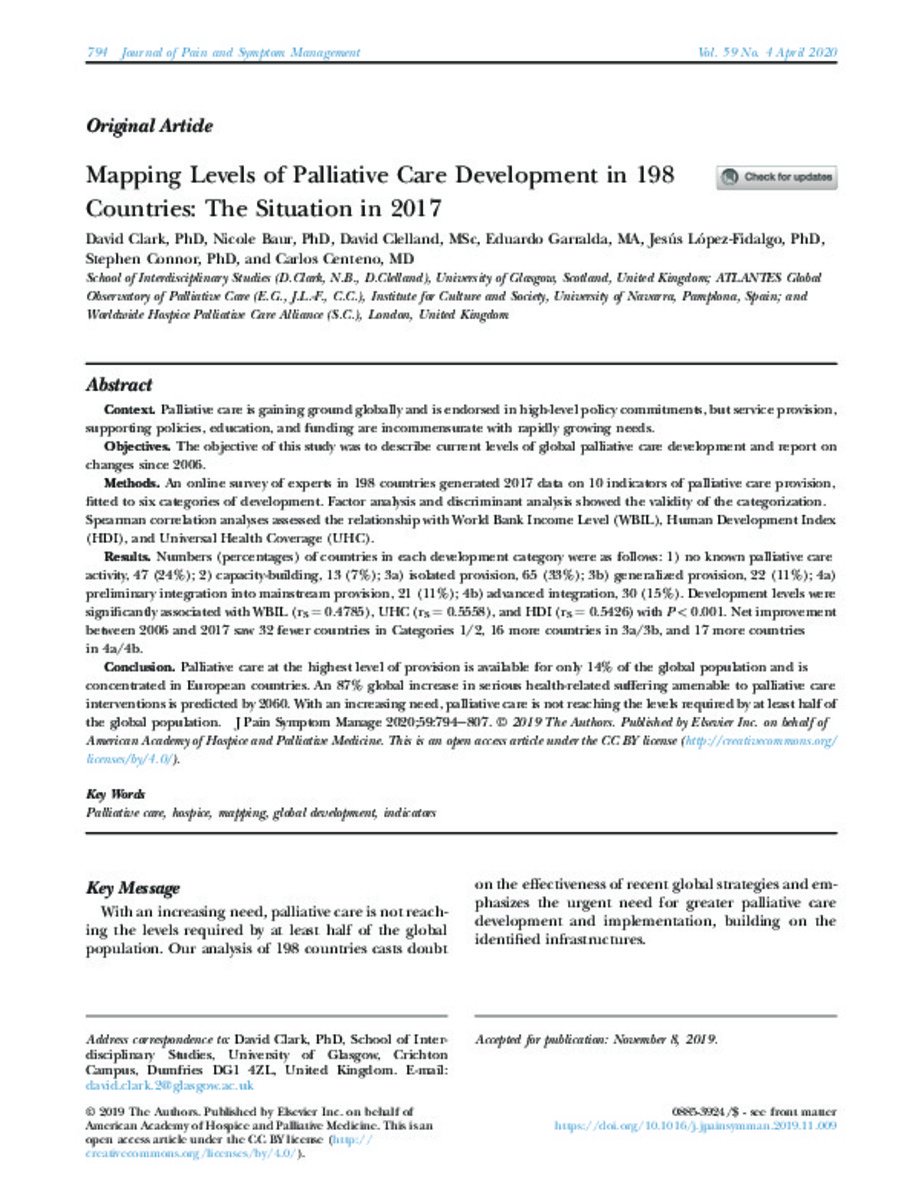Mapping levels of Palliative Care development in 198 Countries: the situation in 2017
Ficheros en este ítem:
Estadísticas e impacto
Los ítems de Dadun están protegidos por copyright, con todos los derechos reservados, a menos que se indique lo contrario.











